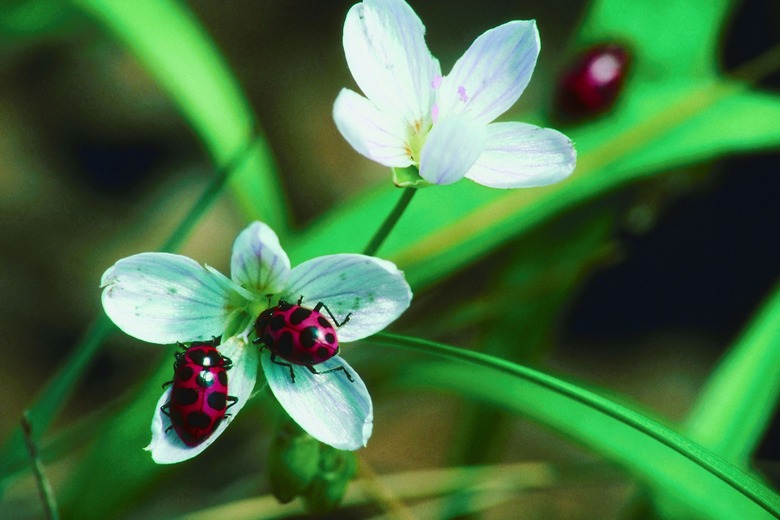How To Get Rid Of Those Bugs That Look Like Lady Bugs
Things Needed
- Vacuum cleaner
- Window screens
- Caulking gun and caulk
- Spray insecticide
- Insect glue traps
The Asian lady beetle is a sneaky pest. It may look like an adorable ladybug, but beware–under that semi-cute exterior lays a nuisance. Ever-reproducing, buzzing about and gravitating toward bright lights, Asian lady beetles are difficult to remove and impossible to ignore. There are methods for ridding your home of these red and black annoyances, though be warned–if you don't take the time and effort to fortify your house against the little intruders, the infestation could repeat itself.
Removal
Step 1
Avoid squishing Asian lady beetles. Inside their bodies is a yellow chemical that they excrete when upset or squashed–this is called reflex bleeding. It stains surfaces, and emits a powerful noxious odor that lingers in the air. For this reason, simply smashing the bugs is not a preferable solution.
Step 2
Spray the Asian lady beetles with an indoor-use insecticide. Read the instructions on any insecticide to make sure it is safe for use indoors. Collect the dead insects with a vacuum cleaner.
Step 3
Hang glue traps near bright lights, windows or other areas where the beetles congregate. These non-lethal traps catch the bugs and when the trap is full, it can be thrown away and replaced.
Step 4
Vacuum them alive. Because of their prodigious numbers and natural defenses against squishing, Asian lady beetles are best disposed of by being sucked up in a vacuum cleaner. Be wary, though–the exhaust on some vacuum cleaners may circulate the smell generated by reflex bleeding. Empty the vacuum immediately after sucking up the bugs.
Prevention
Step 1
Check around the outside of your house for cracks, holes or other openings through which Asian lady beetles could enter. Remember, they don't need much space to sneak in.
Step 2
Fill any holes or cracks with caulk. Form a tight seal to prevent beetles from getting back in. Indoors, look for cracks in the ceiling and around windows, fans and lights. Seal them with caulk.
Step 3
Install window screens in your windows as an extra line of defense against the insects. These can also be used on exhaust fans and vents.
Step 4
Spray pesticide around the outside of the house every fall, focusing on the south and southwest sides. Leave no section uncovered–spray as high as you can from the ground up. Use a fast-acting synthetic pyrethroid insecticide.
